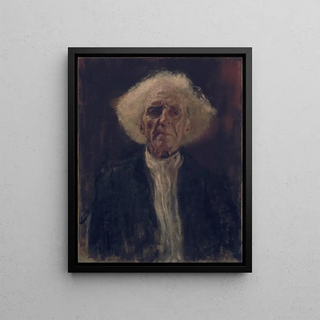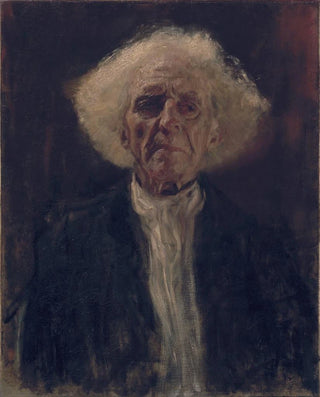Art print | L'Aveugle - Gustav Klimt


View from behind

Frame (optional)
Reproduction L'Aveugle - Gustav Klimt – Engaging Introduction
"Gustav Klimt's" The Blind is a work that transcends mere observation to immerse the viewer in a universe rich with emotions and symbols. Created in 1896, this painting stands out for its ability to evoke profound themes such as suffering, solitude, and the search for meaning. Klimt, master of symbolism and Art Nouveau, manages to capture the very essence of blindness, not only in the literal sense but also metaphorically. The piece invites reflection on perception and absence, thus questioning our own view of the world. Through this work, Klimt encourages us to consider the beauty that can emerge from darkness and isolation.
Style and uniqueness of the work
Klimt's style in "The Blind" is a perfect example of his unique approach, blending sensuality and mystery. The composition is characterized by flowing shapes and sinuous lines, typical of his work, creating an almost hypnotic movement. The colors, though dark, are enhanced by touches of light that seem to emanate from the central figure, emphasizing the vulnerability of the character. The use of decorative motifs and rich textures gives the piece a tactile dimension that invites the viewer to come closer. Moreover, the contrast between the blind figure and the background evokes a dialogue between light and darkness, symbolizing the inner struggle of the individual facing their own demons. This play of contrasts and textures makes "The Blind" a deeply immersive work, where every detail tells a story.
The artist and his influence
Gustav Klimt, born in 1862 in Vienna, is one of the most emblematic artists of the late 19th and early 20th centuries. His work is marked by an incessant pursuit of aesthetics and a desire to explore the depths of the human soul. Klimt succeeded in establishing himself in the art world thanks to his ability to combine various influences, ranging from Byzantine art to Austrian folk motifs. "The Blind" perfectly illustrates

Matte finish

View from behind

Frame (optional)
Reproduction L'Aveugle - Gustav Klimt – Engaging Introduction
"Gustav Klimt's" The Blind is a work that transcends mere observation to immerse the viewer in a universe rich with emotions and symbols. Created in 1896, this painting stands out for its ability to evoke profound themes such as suffering, solitude, and the search for meaning. Klimt, master of symbolism and Art Nouveau, manages to capture the very essence of blindness, not only in the literal sense but also metaphorically. The piece invites reflection on perception and absence, thus questioning our own view of the world. Through this work, Klimt encourages us to consider the beauty that can emerge from darkness and isolation.
Style and uniqueness of the work
Klimt's style in "The Blind" is a perfect example of his unique approach, blending sensuality and mystery. The composition is characterized by flowing shapes and sinuous lines, typical of his work, creating an almost hypnotic movement. The colors, though dark, are enhanced by touches of light that seem to emanate from the central figure, emphasizing the vulnerability of the character. The use of decorative motifs and rich textures gives the piece a tactile dimension that invites the viewer to come closer. Moreover, the contrast between the blind figure and the background evokes a dialogue between light and darkness, symbolizing the inner struggle of the individual facing their own demons. This play of contrasts and textures makes "The Blind" a deeply immersive work, where every detail tells a story.
The artist and his influence
Gustav Klimt, born in 1862 in Vienna, is one of the most emblematic artists of the late 19th and early 20th centuries. His work is marked by an incessant pursuit of aesthetics and a desire to explore the depths of the human soul. Klimt succeeded in establishing himself in the art world thanks to his ability to combine various influences, ranging from Byzantine art to Austrian folk motifs. "The Blind" perfectly illustrates






